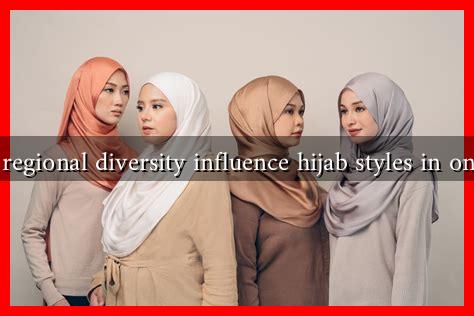-
Table of Contents
How Does Regional Diversity Influence Hijab Styles in One Country?
The hijab, a traditional headscarf worn by many Muslim women, is not merely a piece of clothing; it is a symbol of identity, culture, and personal choice. Within a single country, regional diversity can significantly influence the styles, colors, and materials of hijabs. This article explores how geographical, cultural, and social factors shape hijab styles in a country, using examples from Indonesia, a nation known for its rich tapestry of cultures and traditions.
The Cultural Mosaic of Indonesia
Indonesia is the largest Muslim-majority country in the world, with over 230 million Muslims. The nation is composed of more than 17,000 islands, each with its own unique cultural heritage. This diversity is reflected in the various hijab styles found across the archipelago. The influence of local customs, traditions, and even climate plays a crucial role in shaping how women choose to wear the hijab.
Regional Variations in Hijab Styles
In Indonesia, the hijab is not a monolithic entity; rather, it varies significantly from region to region. Here are some notable examples:
- Java: In Java, particularly in urban areas like Jakarta, hijabs are often styled in modern, fashionable ways. Women may opt for vibrant colors and intricate designs, often pairing their hijabs with contemporary outfits. The influence of fashion trends is strong here, with many women following local designers who create stylish hijabs.
- Sumatra: In contrast, women in Sumatra may prefer more traditional styles. The hijab is often worn with batik, a traditional Indonesian fabric, reflecting the region’s rich textile heritage. The colors tend to be more subdued, and the styles are often simpler, emphasizing modesty.
- Bali: Although Bali is predominantly Hindu, the presence of Muslim communities has led to unique hijab styles that blend local Balinese aesthetics with Islamic principles. Women may wear hijabs adorned with floral patterns, reflecting the island’s vibrant culture.
- West Nusa Tenggara: In this region, the hijab is often worn with traditional Sasak attire. The hijab styles here are characterized by their use of local textiles and patterns, showcasing the region’s cultural identity.
Influence of Climate on Hijab Styles
Climate also plays a significant role in determining hijab styles. In tropical regions like Indonesia, where temperatures can soar, women often choose lightweight fabrics such as cotton or chiffon. This choice not only ensures comfort but also allows for breathability. In contrast, in cooler regions, heavier materials may be preferred, and layering becomes more common.
Social Media and Globalization
The rise of social media has further influenced hijab styles across Indonesia. Platforms like Instagram and TikTok have allowed women to showcase their unique styles, leading to a fusion of traditional and modern aesthetics. Influencers and fashion bloggers play a pivotal role in shaping trends, making hijab fashion more accessible and diverse.
According to a study by the ResearchGate, over 70% of young Indonesian women reported that social media significantly impacted their hijab choices, leading to a more personalized expression of their faith and identity.
Conclusion
Regional diversity in Indonesia profoundly influences hijab styles, reflecting the country’s rich cultural heritage and social dynamics. From the vibrant urban styles of Java to the traditional looks in Sumatra, each region offers a unique perspective on how hijabs can be worn. Climate, local customs, and the impact of social media further shape these styles, allowing for a dynamic expression of identity among Indonesian women. As globalization continues to blur cultural boundaries, the hijab remains a powerful symbol of both faith and individuality, showcasing the beauty of diversity within a single nation.


